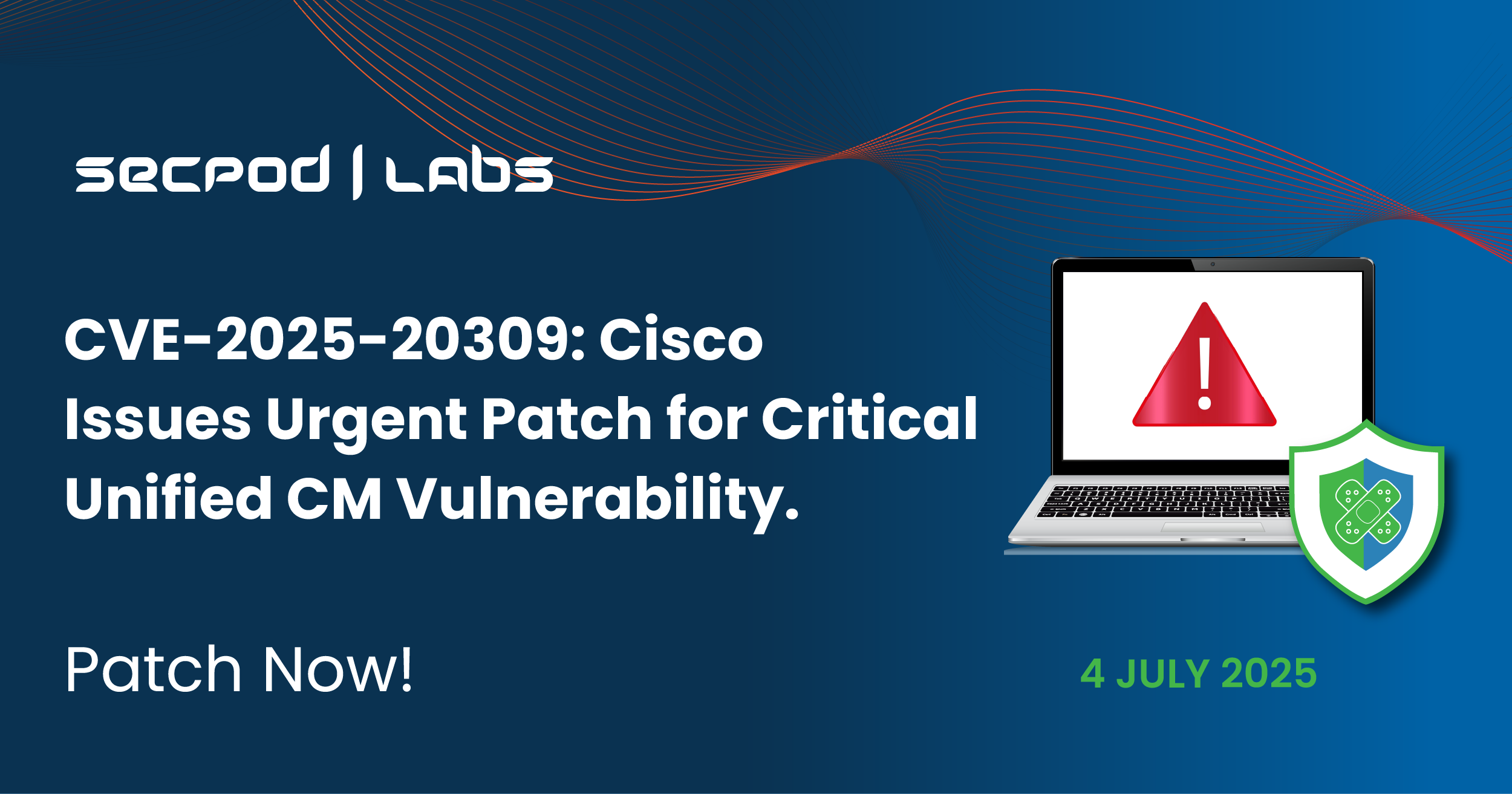A critical security vulnerability has been discovered in Cisco Unified Communications Manager (Unified CM), presenting a serious threat to organizations running impacted versions. Tracked as CVE-2025-20309 and carrying a maximum CVSS score of 10.0, the issue arises from hardcoded root credentials. This could enable unauthenticated remote attackers to access affected systems with root privileges, potentially taking complete control.
Root Cause
The root cause of CVE-2025-20309 lies in including static user credentials for the root account, which were meant to be used strictly for development and testing purposes. These credentials, unfortunately, were not removed before the product’s release, creating a significant security loophole. An attacker could exploit this vulnerability by using the account to log in to an affected system.
Affected Products
The vulnerability impacts Cisco Unified CM and Unified CM SME Engineering Special (ES) releases 15.0.1.13010-1 through 15.0.1.13017-1, regardless of the device configuration.
Impact & Exploit Potential
The consequences of successful exploitation are severe. An attacker gaining root access can execute arbitrary commands, potentially leading to complete system compromise. This could result in data breaches, service disruption, or the deployment of malicious software within the affected network. The CVE-2025-20309 vulnerability has a CVSS score 10.0, marking it as critical.
Tactics, Techniques, and Procedures (TTPs)
Attackers exploiting this vulnerability can leverage various tactics, techniques, and procedures (TTPs) to compromise systems. These include:
- TA0001 – Initial Access: Gaining initial entry into the system by exploiting the static SSH credentials.
- TA0004 – Privilege Escalation: Escalating privileges to root by logging in with the hardcoded credentials.
- TA0002 – Execution: Executing arbitrary commands with root privileges after successful login.
- T1210 – Exploitation of Remote Services: Exploiting the vulnerability through remote access to the affected service.
Mitigation & Recommendations
Cisco has addressed the vulnerability by removing the backdoor account from Unified CM. There are no workarounds available to mitigate this vulnerability. The only way to resolve it is by upgrading to Cisco Unified CM and Unified CM SME 15SU3 or applying the patch file CSCwp27755.
Administrators can check for signs of exploitation by examining system logs. As Cisco notes, a successful exploit of CVE-2025-20309 would leave a log entry in `/var/log/active/syslog/secure` for the root user with root permissions. This logging is enabled by default, and administrators can retrieve the logs and search for exploitation attempts using the command: `file get activelog syslog/secure`.
Instantly Fix Risks with Saner Patch Management
Saner patch management is a continuous, automated, and integrated software that instantly fixes risks exploited in the wild. The software supports major operating systems like Windows, Linux, and macOS, as well as 550+ third-party applications.
It also allows you to set up a safe testing area to test patches before deploying them in a primary production environment. Saner patch management additionally supports a patch rollback feature in case of patch failure or a system malfunction.
Experience the fastest and most accurate patching software here.
Lorem ipsum dolor sit amet, consectetur adipiscing elit. Ut elit tellus, luctus nec ullamcorper mattis, pulvinar dapibus leo.

